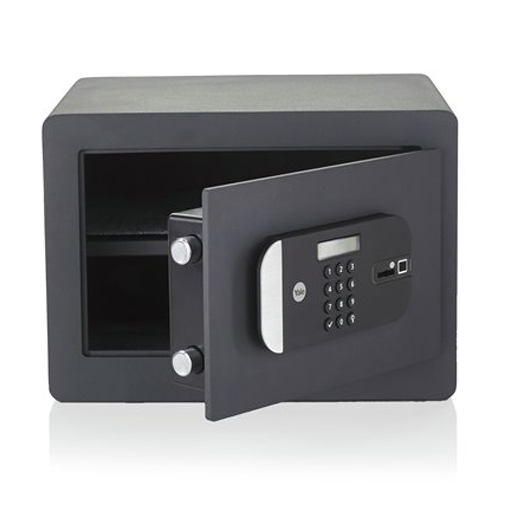
- November 14, 2023
Are biometric safes better than key lock safes?
Whether it be to protect expensive jewellery, family heirlooms or important documents, a safe is sure to keep your valuables as safe as possible – out of sight of opportunists.
However, to make matters confusing, safes come with a variety of locking options, all of which provide high levels of security and offer their own advantages and disadvantages.
Want to know which is best?
Here the team at eSafes talk through the key advantages and disadvantages of two types in particular: biometric and key lock safes, to help you make an informed decision.
What are biometric safes?
Biometric safes are commonly referred to as ‘fingerprint safes’.
Users place their fingers over a scanner to retain or gain access to the items stored inside. If their fingerprint is not recognised in the system, the safe door will not open.
These types of locks have been relied on for many years, but they’re only available on a limited number of safes – mostly because of their high purchase price.
The pros and cons of biometric-locking safes
With no code to memorise or key to misplace, a biometric safe is more secure than a key or combination lock and helps to keep intruders out.
Fingerprints are unique. Unlike keys and codes, they cannot be copied or forgotten.
Usually, more advanced models have a log that can be read and users can be managed (i.e. added, removed or temporarily blocked) as and when you need them to be.
One of the only downsides to fingerprint safes is their price. These models typically come at a higher cost – but, as with most things, you get what you pay for. They will protect your irreplaceable possessions against burglary attacks and save you the expense of costly repairs.
What are key lock safes?
A key-operated safe is one of the simplest and least expensive on the market.
These safes are typically the go-to choice in busy environments, such as offices and businesses, where multiple people require access – either to add or remove items from the safe.
This is because keys can easily be duplicated and allocated to the appropriate personnel.
The pros and cons of key-locking safes
Key-locking safes are straightforward to use, allowing you to lock and unlock the door with the simple turn of a key. This is ideal if you’re not very good at remembering combinations, and you can’t afford a biometric lock.
However, key management is an important security issue.
For example, the key must not be left anywhere near the safe, as thieves could conveniently use it to open up your safe and help themselves to your valuables.
Whilst keys can be cut and assigned to multiple people – making it more convenient for them to access the safe as and when they need to – this also increases the risk of them being lost, stolen or copied yet again.
Unsure which type of safe to choose?
As a rule of thumb, the best lock is not only one that you feel comfortable with, but one that’s practical and within your price range.
If you’re constantly forgetting where you put your keys or you’re looking for a more convenient means of accessing the contents held within your safe, a model with a biometric lock fitted is ideal.
Whereas, if you’d prefer the dependability of a key lock, and you’re looking for a cost-effective solution for securing valuables, consider a key-operated safe.
Here at eSafes, we stock a fantastic range of key safes and fingerprint safes from renowned brands, such as Burg Wachter, Burton and Yale, to name just a few. These are available at various price points and include different insurance ratings.
Our friendly team is always on hand to assist you in choosing the best one for your security needs. So, why not give us a call on 0800 783 2328?
- November 14, 2023



